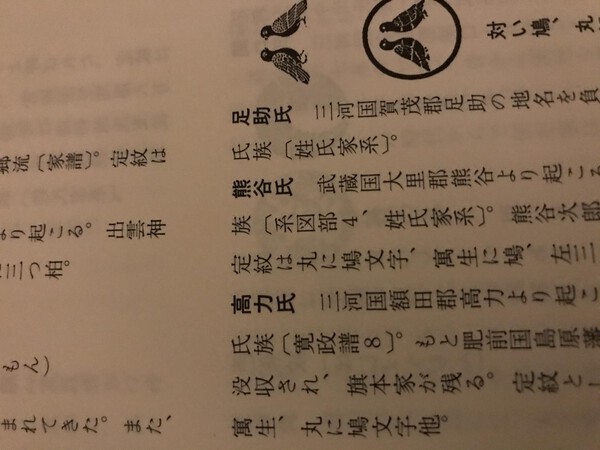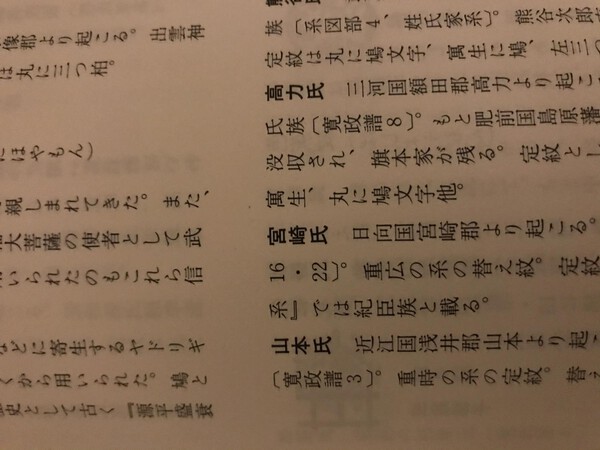-
Posts
643 -
Joined
-
Last visited
Everything posted by Justin Grant
-

Japanese military matchlock signature
Justin Grant replied to Japanese matchlock's topic in Tanegashima / Teppo / Hinawajū
-
Thanks all! The Hatto on my Kabuto have one with its mouth closed and the other open, a possible Buddhist reference? Lots of interesting subtle references. My armor also has Amano kamon references, which leads me to the Koriki line that used this Kamon, since these two families had a lot of history.
-
Not sure why my phone rotates the images. Sorry
-
-
-
I’ll take a photo
-
Good evening, I am researching a group of families that used a particular Kamon. The book (in Japanese), list this as the family and province. I translated them, but not sure I have the Miyazaki translated properly. I can only find it as a province and within the Hyuga region. So maybe I have translated it wrong? 宮崎氏 Miyazaki Family 日向国(ひゅうがのくに)Hyūga Province Lastly, not sure what this means. I may have the wrong first Kanji, the book font is small and uses a fancy type that makes finding radicals and such difficult. 采図部4, 姓氏家采 The book it titled 家紋でたどるあなたの家采 and I am on page 三七二 Thank you, Justin .... lost in radicals and translation.....
-
Lacing, yes. Urushi..... No...
-
Photos of the texture. This is the one I owned, now owned by Dave. As for the history of all "18 known armors", there is a museum in Japan that has one, and the history of these special armors. I don't have the text handy, but not my job to convince anyone of anything.
-
Thanks for the clarity on the first line. I assumed on my phone screen that the last kanji was a saku and the first was the Mitsu kanji. Good read Uwe.
-
My pedestrian attempt. The smiths name, which may be Akii or ??? Not sure how to read the two kanji in a name. My dictionary says the second kanji in a name reading is “I” pronounced eeh, the first kanji in a name would be a bunch of different ways. Mitsu is the most common but with the following kanji, it suggests many different possibilities. Anyway, the other few lines date it to the Southern Court in 1390 ish and a day and month. Can’t make out the far left line. To blurry and I’m not that good at it.
-
If you want a serious set of books, Sasama-san has the best books, in my opinion. Pricey, but some of the best.
-
The blue lacing was not done right either. So please don’t use it as any reference. As for the lames, I run a temp line down both front and the back middle. This can allow for proper spacing. The best plugs is rice paper and white glue. You can buy it colored blue and it can hide better. I’m not picking on you. It takes a lot to want to try. Take it as constructive feedback. When I started Dave busted my chops, but it comes from his desire to make us want to do better. Use blue, the flashier then color, the more mistakes stand out.
-
Dave has never been in the running for a “charm award”, but I think he was being honest. For feedback, it’s pulled to tight, the edge rolls are not uniform, the cross-nots are pulled to tight and don’t make the proper button shape, and spacing of the lames is off. It’s a start but if he wants it to look good, spend the time and do it right. Looking at authentic armor will tell you what it should look like. Dave and Ian have several articles on the web and Anthony Bryant’s site is still up. They instruct on what success looks like.
-
Here is a link, it has a section on Sukage. https://sengokudaimyo.com/katchu/katchuch05 Depending on how the top lame is attached to the bowl, determines where you start. Essentially, it's a large "U, and starts at the top and works it way down. I usually cut my odoshi 40-50% longer than needed. Some do 30%. I take a "U" shaped section, dangle it from the top, and drape it down past the bottom lame, and add 30-50% then cut it. It's easier for me to cut off than to add if you under guess. The tucks, twists, and knots are critical to making this look good. Also need to size the silk odoshi to the proper ana (hole) size.
-
Anthony, Have you had anymore research into the Colt Navy 1851 history? When I had it "authenticated" as "historic" so FedEx would ship it, the guy wondered about the "American" numbers, as he put it... (we know they are Arabic in origin). Anyway, he suggested to see if the number was associated with the Colt, which says that specific low serial number was an "1851 NAVY (.36 CALIBER WITH NAVAL ENGAGEMENT ON CYLINDER, OCTAGONAL BARREL)". But I'd give my eyeteeth to have it.. It is a rather excellent gun, and I'd trade my most prized 1886's Winchester Model 1873 Lever Rifle for it, and not blink an eye, and I almost had to sell a child to by the rifle!
-
I have to admit, these are not my area, or usually my cup of tea, but I rather like this one. The metal finish looks nice and well done. The proportions look right, and balanced. I am not a fan of the "chocolate" leather on the facing, but the obverse if it looks good. Is it the hand of Ichiro, or an older hand. It seems to my novice opinion that it comes from a skilled hand.
-
The dragons are child-like and of low quality. Look at the old pattern on the edging of the plate, and how crisp and clean and well executed these are. The scales on the dragons fail to connect, cross borders, etc. Not the same hand or skill, forgetting they are not the proper dragons for a Mongol to start with. How old are the applications? Not my guess, but I'd bet a proper dinner that they are not original.
-
I think, in my pedestrian opinion, that the child like Japanese dragon's painted on it are certainly not 13th Century Mongol. The design, if for females, beside poorly rounded and finished, gives a whole new meaning to lift and separate, to an unnatural degree for any female. Additionally, looking at the outside, the "cleavage" area looks like a bone representation of a spine, and worse, in the inside, these are presented by protruding nodules that would absolutely be painful for anyone wearing this. Just my opinion, I've only a cursory understanding of Mongol armor, and know nothing of female Japanese armor.
-
Ian and Luc, That makes sense. And I'm assuming the crude Fudo bonji and the crude 3 toed dragons are much later additions, because I thought Mongol Dragons had/have 4 toes like the Chinese. Interesting piece.
-
Thank you so very much. It’s wonderful of you to do this for me.
-
I have an antique Suzuri Bako and the bottom of the storage case has a name, I believe the first two are Nakamura, but stuck on the other two. Any help is appreciated. And sorry for the picture being sideways. No options to correct on the mobile platform.
-
Piers, I'm a fan of stocks, and would love to have a few. I collect them from the "wood working" aspect.






